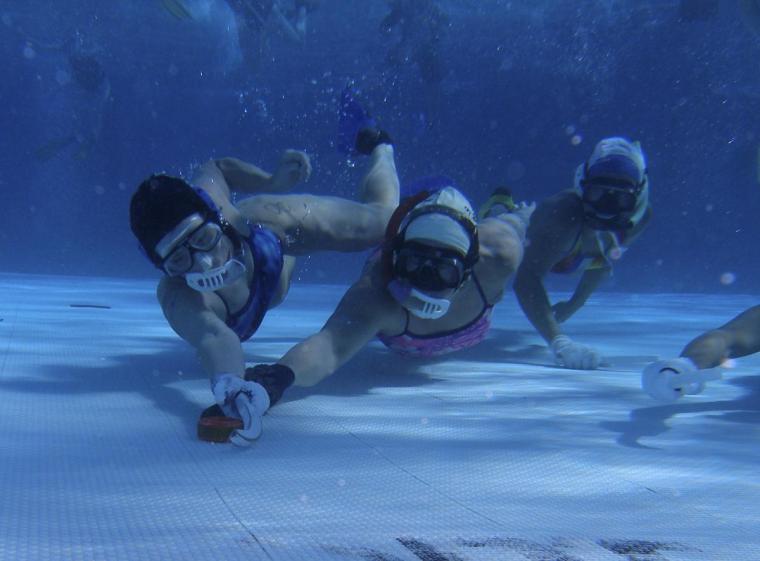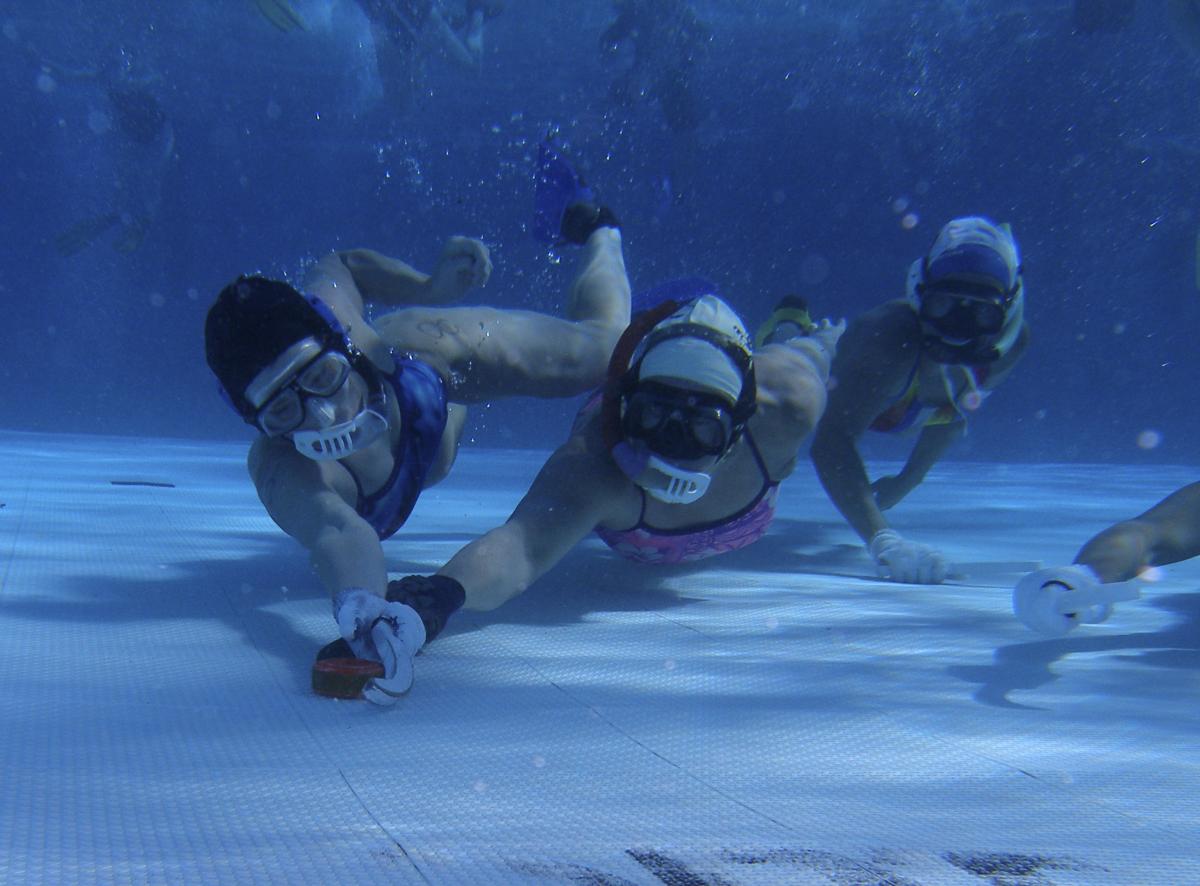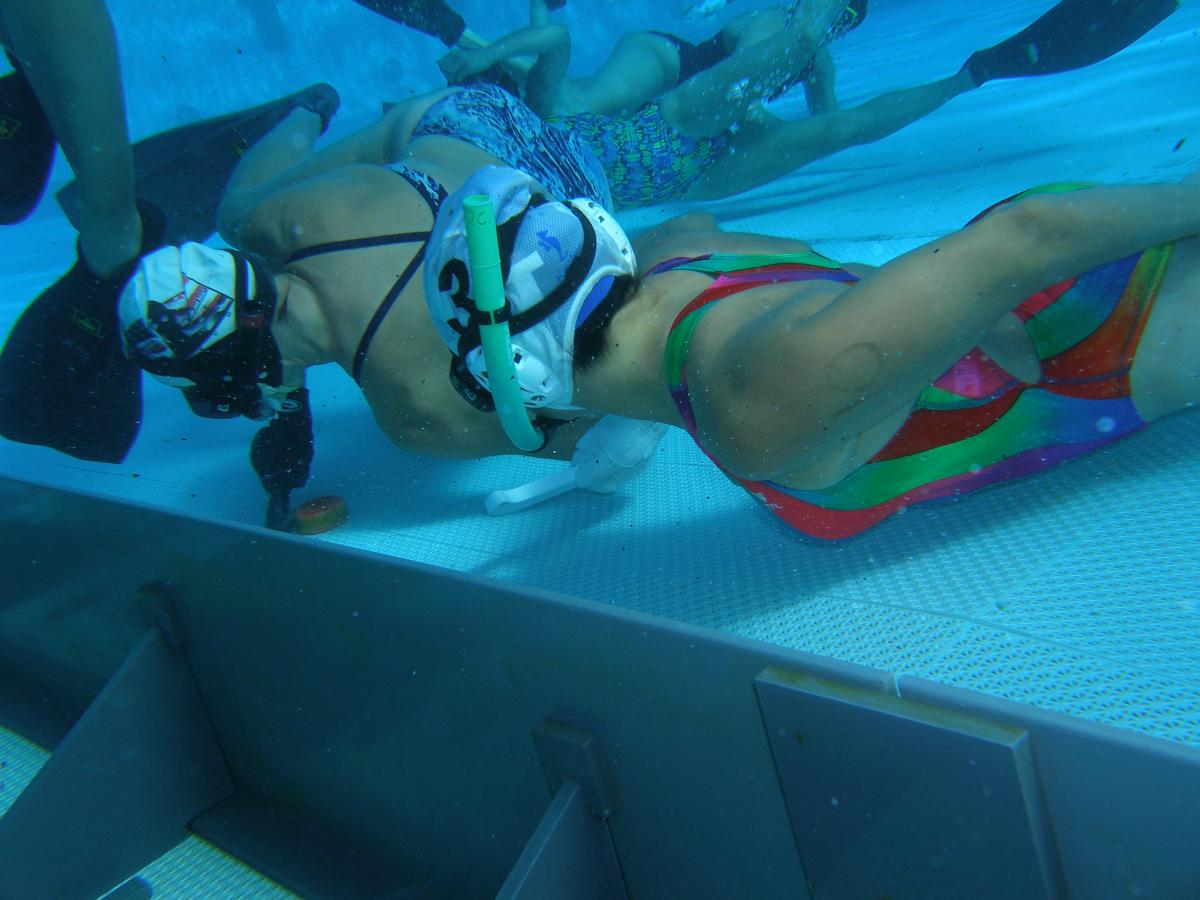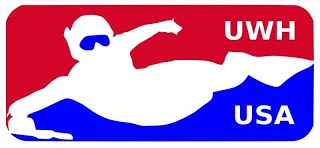

USA Underwater Hockey (USAUWH) is a player-driver organization, focused on supporting and promoting underwater hockey for all participants of all backgrounds. USA Underwater Hockey is a sport committee of the Underwater Society of America, the national governing board for underwater sports in the United Sates. Local, regional, national, and international competition is organized, promoted, and sanctioned by the USOA.
About the sport: Underwater hockey is played six-on-six with two 15-minute halves to each game, and the strategy is similar to soccer, basketball and ice hockey. Players carry a stick (about 12” long) and wear masks and fins, but not oxygen tanks. They also wear head protection (either the same type used in water polo or the same type used in wrestling), gloves and a mouth guard. On average, each player is underwater less than 10 seconds at a time, and almost never more than 15 seconds. Success, meaning putting the puck in the goal trough at the bottom of each end wall, ultimately depends on teamwork.
Carolyn Erdman: People tend to get involved with it at the college level because there are colleges with club teams. Those clubs tend to do meet-ups to play each other. Then, after people graduate from college, they may join a local club and play there. If they move to a new city, they look for underwater hockey. If they can’t find a club there, they’ll start one. That’s really how it grows.
SDM: USAUWH has a lot of activity at the national and international level as well. Your website lists a number of those.

Erdman: This is a very exciting year for us. We sent our first team in 10 years to the Age Group Worlds this past summer. Those World Championships are held every odd-numbered year and include four divisions for U19 men and women as well as U23 men and women. Our next main event is a short seven weeks away. We and 16 other countries will be sending teams to Stellanbosch South Africa (near Cape Town). At Worlds (held every even year), there are also four divisions: Men’s and Women’s Open Elite and Men’s and Women’s Masters. Masters Women need to be 32 before the start of the tournament and Masters Men need to be 35 and older.
Recently, I was at the CamAm Midwestern Championships with the women's Masters team. This is our first Women's Master's team in 10 years. The Canadian and USA women's Elite were also in attendance as well as four regional teams in the Elite division. The Open division included local club teams from Michigan/Illinois, Minnesota and two from Wisconsin. That division was rounded out with another women's team from all over USA and Canada and a team of four of our U19 team, plus a coach from New Zealand, Liam Watson and the SFUWH's youth coach. Having Liam at an event is like having Michael Jordan come play with your basketball team.
Erdman: We can play in any kind of pool as long as it’s the right depth. Ideally, you want something two to three meters deep, which translates into seven to 10 feet, with a flat bottom. If it’s too shallow, it’s just not fun, and if it’s too deep, it won’t work since you’re down there without an oxygen source.
SDM: What are you looking for in a competition facility?
Erdman: You really want two pools – one where you’ll be playing and another where you can warm up. If you want to compare it to another sport, our needs are very compatible with those of water polo. The filtration system is very important.
Editor’s note: In the Official Rules, pool dimensions are provided. In addition, information on hosting underwater hockey events can be found in this section of USA Underwater Hockey’s website.
SDM: Do pools need special markings for play?
Erdman: Sport Court is now supplying floor tiles for pools being used for the sport. We currently have those tiles in four pools around the country. But if people are just learning the game, or just practicing, they might just designate their own boundaries for the field of play – from this lane line to that one, from that end of the pool to the ladder.
SDM: It’s a unique sport.

Erdman: This game is 3-D because you might have people above and below you in the water, and you’re all trying to move the puck around. You really have to be good at teamwork because you can’t talk to people. The longest you’re going to be down there is 10 seconds at a time so you really need to be able to work together and rely on one another.
SDM: You talked about club play earlier. Do clubs compete as well?
Erdman: Clubs will play against each other and they’ll also have scrimmages.
SDM: If local clubs are playing, when do they practice?
Erdman: We tend to see clubs booking time in the pool from about 8 p.m.-10 p.m., after swim teams are done. That seems to work out well in a lot of places.
SDM: Do you have any ideas about participation numbers?
Erdman: Worldwide, it has been estimated there are about 15,000 people who play but we think it could be double that.
Erdman: Our biggest marketing challenge is how do we get more college club teams. Pools are a money-maker for colleges, and the colleges need to decide how to set aside pool time because of that. Our biggest challenge is getting those clubs formed and continuing the recruiting. If we want to be competitive at Worlds, you want to build the top level of players, but you need to work on the bottom level, getting people playing first.


